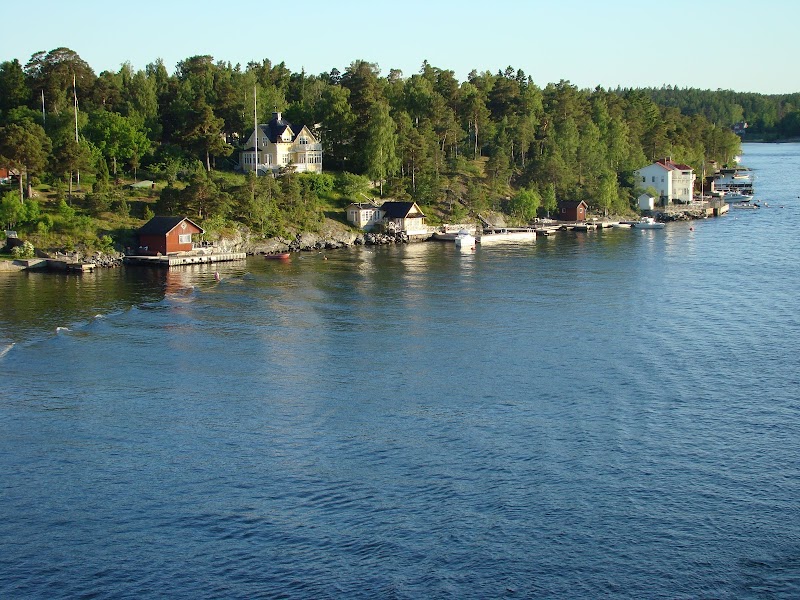Paddling Through Calm Waters: Kayaking the Stockholm Archipelago Channels
Explore the tranquil waterways of the Stockholm Archipelago by kayak, where calm channels weave between granite islands and untouched pine forests. This accessible adventure offers stunning scenery paired with practical navigation tips to help you embrace the archipelago’s unique rhythms safely and confidently.
Check Weather and Wind Conditions
Winds can change quickly in the archipelago, turning calm waters into choppy passages; always check forecasts before launching and plan your route accordingly.
Dress in Layers and Wear a Life Jacket
Temperatures can fluctuate, and water remains cold even in summer; wearing a life jacket and layered clothing helps maintain safety and comfort.
Use Waterproof Storage
Keep maps, electronics, snacks, and extra clothing dry in waterproof bags or containers to avoid damage and ensure supplies stay usable.
Start Early to Avoid Crowds
Launching in the early morning hours gives you calm waters and solitude, as popular islands become busy later in the day.
Paddling Through Calm Waters: Kayaking the Stockholm Archipelago Channels
The Stockholm Archipelago stretches out like a calm labyrinth of water and islands, daring you to explore its serene channels by kayak. Here, the sea is a quiet partner, pushing your craft steadily through narrow waterways flanked by rugged granite cliffs and dense pine forests that lean toward the water’s edge as if whispering secrets. Each stroke pulls you deeper into an environment fiercely itself—unyielding, yet inviting.
Start your journey near Stockholm city, where rental shops equip you with everything necessary for safe passage. Kayaking here is both calming and engaging: the channels vary from wide, open waterways to tight passages that demand nimble navigation. Expect distances between island stops to range from 2 to 5 kilometers, depending on your chosen route.
Paddling through this serene environment, you’ll notice how the wind plays with small waves, and how the islands listen silently around you, their shores free of crowds. Pine trees rise straight from rocky outcrops, their roots tangled in the crevices below, as sea birds wheel above, occasionally breaking the stillness with a swift call.
Safety in these waters means respecting the archipelago’s moods. Currents can be mild but persistent; tidal shifts alter shoreline access, and sudden winds can ruffle flat stretches into choppy challenges. Dress in layers suited for the season, wear a life jacket without fail, and pack water and snacks in waterproof containers. GPS maps and a compass are reliable tools—cell phone reception can falter among islands.
Typical routes last between 3 and 6 hours, making day trips practical, but there’s also the option to camp on designated islands, where wooden piers and fire pits encourage longer exploration. Launch early to catch dawn-reflecting waters and enjoy quieter channels before day visitors arrive.
Kayaking here requires moderate fitness and some paddling experience, especially when navigating narrow openings and occasional gusts. The best time to set out is late spring through early autumn when water temperatures rise and daylight stretches long.
As you glide, notice how the water’s surface mirrors the sky’s mood—sometimes a smooth glass sheet, other times a restless dance of light. The archipelago demands awareness but rewards with tranquility, discovery, and a rare chance to be part of something ancient and vast, yet intimately close. Every paddle stroke is a conversation with nature—steady, respectful, and alive.
Nearby Trips
All Adventures
Boat Charters
Water Activities
Adventures near Stockholm
Discover the unique and memorable adventures that make Stockholm special.
Frequently Asked Questions
Is kayaking suitable for beginners in the Stockholm Archipelago?
Yes, many channels are calm and well-suited for beginners. However, it’s important to start with shorter routes, take a safety briefing, and consider renting kayaks from local providers who offer basic instruction.
Are there places to stop and camp overnight?
Yes, several islands have official camping areas with fire pits and docks for kayaks. Always use designated sites and follow local regulations to minimize environmental impact.
What wildlife might I encounter while kayaking here?
Expect to see sea eagles soaring overhead, seals basking on rocks, and various waterfowl including herons and mergansers. Early mornings and late evenings offer the best chances for spotting shy wildlife.
How do I navigate the hundreds of islands without getting lost?
Use detailed nautical maps or GPS devices, and pay attention to land features like distinctive rocky cliffs and tree clusters. Asking locals for recommended routes is also helpful.
Is it safe to kayak alone in the archipelago?
While possible, kayaking alone demands thorough preparation, strong skills, and informing someone of your planned route and expected return. Group paddling is safer and often more enjoyable.
Can I kayak year-round in the archipelago?
Most kayakers prefer late spring to early autumn for warmer weather and open water. Winter kayaking is extremely challenging due to ice and cold, and generally not recommended without specialized training.
Recommended Gear
Sit-on-top or touring kayak
A stable, maneuverable kayak suited for calm to moderately choppy waters is ideal for exploring the archipelago channels comfortably.
Personal Flotation Device (PFD)
Wearing a life jacket is mandatory for safety, providing buoyancy and visibility.
Waterproof dry bags
Essential for keeping electronics, clothing, and food dry throughout the trip.
Layered quick-dry clothing
Dressing in layers helps regulate body temperature, manage sweat, and adjust to weather changes on the water.
Local Insights
Hidden Gems
- "The narrow passage between Ljusterö and Svartsö offers calm waters rarely crowded with boats."
- "Visit the less frequented island of Finnhamn for quiet beaches and local artisan shops."
Wildlife
- "Keep an eye out for the elusive white-tailed eagle cruising low over the water."
- "Harbor seals often rest on rocks near the islands, particularly around dawn and dusk."
History
"The archipelago has been a crucial fishing and boating area for centuries, with small red wooden cottages reflecting traditional Swedish coastal culture. Some islands hold remnants of Cold War-era military installations now open for exploration."

